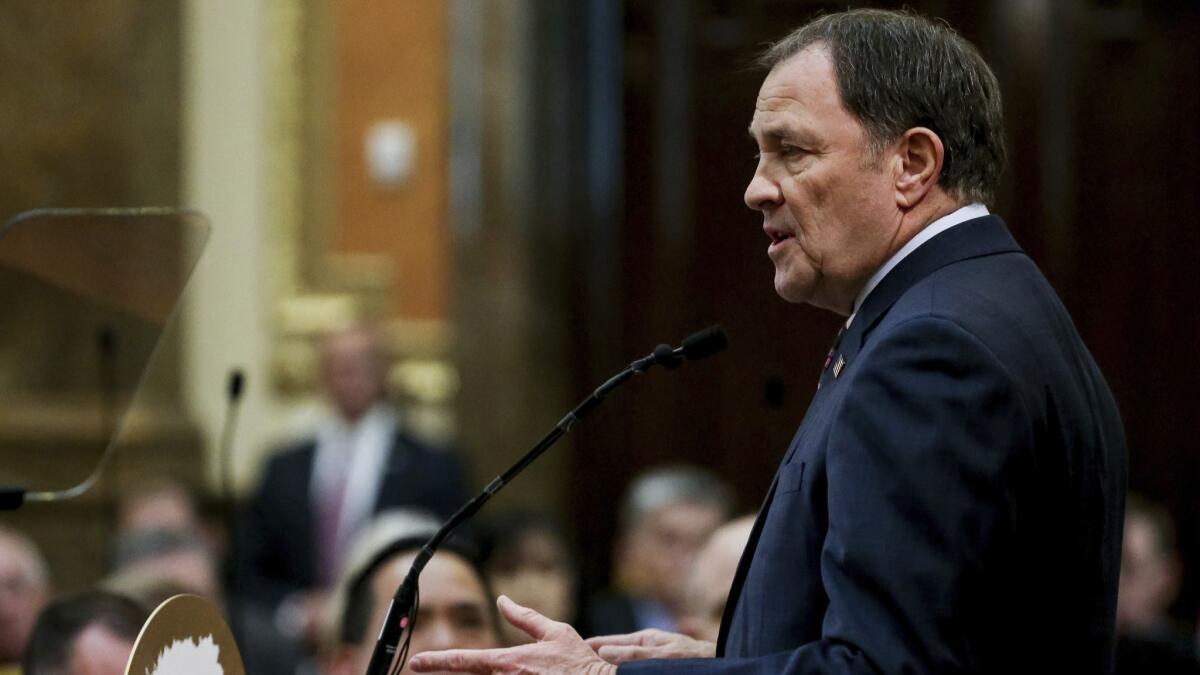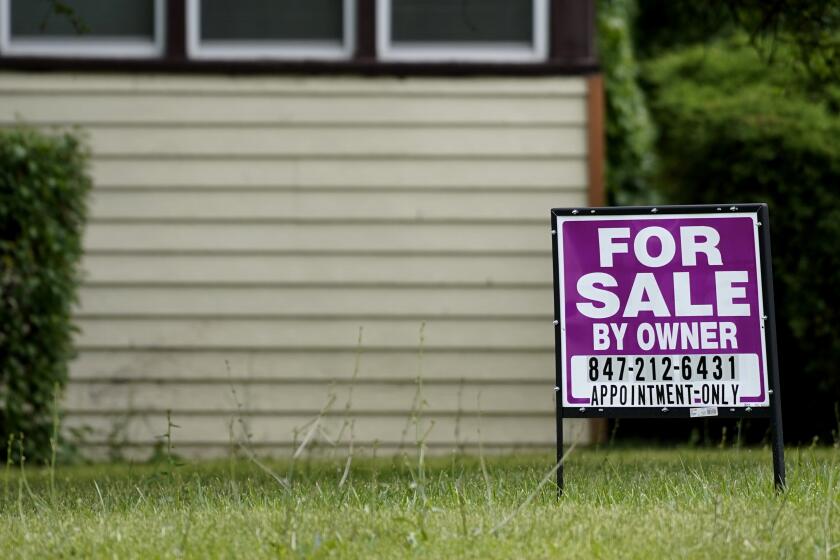Column: Stupid Medicaid tricks: Utah figures out how to spend more to cover fewer people

- Share via
It has become obvious over the past few years that the Affordable Care Act has the power to cloud Republicans’ minds.
But few are as befuddled as the legislature and governor of Utah, who just enacted a partial expansion of Medicaid under the ACA that will cover 60,000 fewer residents while costing the state more than full expansion.
What’s more, the measure represents flagrant defiance of the people’s will. At the November polls, Utahans approved a full expansion of Medicaid by a solid 53%-47% vote.
“I do not accept the characterization that SB 96 ignores the will of the people,” Gov. Gary Herbert said of the bill that superseded the November initiative. “I see this as a thoughtful effort to implement the will of the people.”
Sure it is. Let’s look briefly at the differences. The ballot initiative approved the expansion of Medicaid to residents earning up to 138% of the federal poverty limit. That’s the target population of Medicaid expansion under the ACA — $34,638 this year for a family of four.
SB 96 expands Medicaid only for residents earning up to 100% of the poverty limit, or $25,100 for a family of four.
Full expansion would have covered about 150,000 residents; partial expansion will cover only about 90,000. But it is expected to cost the state $49 million more in its first two years. That’s because the ACA provides for the federal government to cover 90% of the cost of full expansion as of 2020, but will pay only 68% of the cost of partial expansion.
The Utah bill also includes some other noxious features, including a work requirement for Medicaid enrollees and a cap on enrollment if costs rise beyond legislative appropriations. Utah is hoping to obtain a waiver from the Trump administration providing the full 90% match for its half-baked expansion.
I do not accept the characterization that SB96 ignores the will of the people.
— Utah Gov. Gary Herbert
The Utah bill is a repudiation of a trend that emerged in the November election, when voters there and in Idaho and Nebraska approved Medicaid expansion. Voters in Kansas and Wisconsin elected governors who pledged to reverse their predecessors’ refusal to expand Medicaid, and voters in Maine elected a governor who promptly reversed the refusal of outgoing GOP Gov. Paul LePage to implement an expansion that had been passed by that state’s voters in 2017.
The pushback against the popular will could spread. According to David Anderson of Duke University and Adrianna McIntyre of the healthcare blog The Incidental Economist, GOP regimes in Tennessee and Georgia are keeping an eye on Utah’s negotiations with Trump officials in the hope of implementing the same partial rollout.
Let’s take a closer look at the Utah plan and its implications for low-income residents.
The plan allows residents with household income falling between 100% and 138% of the federal poverty limit to obtain health coverage via the ACA’s insurance exchange, which will allow them to collect the ACA’s federal premium subsidy.
As Anderson and McIntyre observe, this provision takes advantage of an unfixed drafting error in the Affordable Care Act, which set Medicaid eligibility at up to 138% of the poverty line but also established eligibility for the premium subsidy at 100% of the line. That didn’t matter much, originally, because the ACA made Medicaid expansion mandatory and enrollment in the program automatic for those earning less than 138% of the poverty line.
In 2012, however, the Supreme Court made the expansion optional; 14 red states still haven’t approved it. That turned the drafting glitch into something of a lifeline for an estimated 2 million residents of those states whose incomes fell in the 100%-138% window and therefore could obtain subsidized coverage.
But Anderson and McIntyre point out that from the enrollees’ standpoint, Medicaid and subsidized coverage aren’t equivalent — and for many low-income households, Medicaid is better, in part because it provides better financial protection by limiting maximum out-of-pocket spending to 5% of income, compared with limits of 10% of more for ACA plans. Medicaid offers other benefits not seen in health plans, such as “non-emergency medical transportation, to assist beneficiaries in getting to their medical appointments.”
The main benefit of partial Medicaid expansion is to the budgets of states that opt to pursue it, because they’re effectively shunting the cost of covering the population earning between 100% and 138% of the poverty line to the federal government, which pays for the premium subsidies. But they’re still paying more to cover the population earning 100% or less than they would if they fully expanded Medicaid, since the federal match for Medicaid patients would be lower.
Whether Utah can obtain the federal waiver it seeks, raising the federal match to the full 90% for its partial expansion, is unclear. The Obama administration’s position was that the ACA did not allow for partial expansion to be covered by the full match. (The federal match for expanded Medicaid actually was 100% in 2014-16, declining to 90% afterward starting in 2020; but for Utah and other resistance states, the 100% train has left the station.)
The Trump White House, however, has been much more indulgent of state proposals that would undermine Medicaid, including through the imposition of work requirements and premiums. Federal judges generally have frowned on some of those waiver requests, but the efforts continue.
The Utah legislature and governor have reserved for themselves a relief valve, in case federal officials turn down their request for the higher match; if that happens, they’ll revert to full expansion.
But that just raises the question of why they’re bothering with a half-measure. There’s no rational reason for a plan that deprives 60,000 otherwise eligible residents of Medicaid coverage, at a higher cost to the state — none except the blinding influence of anti-Obamacare ideology. Utah’s voters decided in November to shed those blinders; why are their elected representatives still wearing them?
Keep up to date with Michael Hiltzik. Follow @hiltzikm on Twitter, see his Facebook page, or email [email protected].
Return to Michael Hiltzik’s blog.
More to Read
Inside the business of entertainment
The Wide Shot brings you news, analysis and insights on everything from streaming wars to production — and what it all means for the future.
You may occasionally receive promotional content from the Los Angeles Times.











